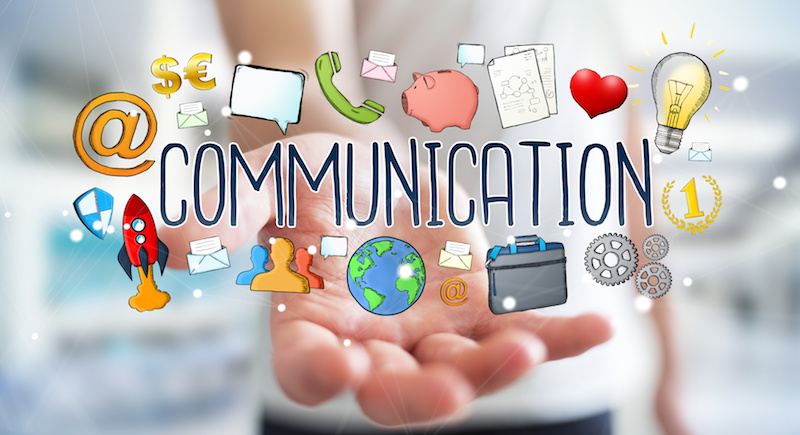Communication is critical in connecting with and engaging both clients and candidates. Want to learn how to leverage your existing communication channels and messaging? In a Recruitment Marketing Magazine exclusive three-part series, Tanya Williams shares how to use your people, culture and communication as part of Leverage Marketing, a cost-effective strategy to amplify your existing assets. Part 3 of this series focuses on communication.
Communication. It is such a big and important word in businesses, especially as it relates to people.
When we talk about communication in marketing, the emphasis is often on external communication to clients or candidates. However, you need to also consider how “the big Cs” impacts your organisation internally, in both marketing and non-marketing related activity.
As I have mentioned in Part 1 and Part 2 of this series, your goal in Leverage Marketing is to leverage your existing assets: your people, culture and communication. Now let’s dive deep into the final piece of the puzzle – communication.
Communication is defined as the imparting or exchanging of information by speaking, writing or using some other medium. Communication encompasses your content and all the messages you are sharing.
Let’s first consider how we are communicating in 2019. Think about how you use your smartphone and the technology around you. I guarantee it has drastically changed in the past 12 months alone. If your place looks like mine, you have multiple smartphones, tablets, laptops, Google home, wifi, and various other devices to help you get information fast and stay connected.
The same is reflected in our business world. We want to get information that is relevant to our business quickly and we want to get information to our prospective clients and candidates quickly. How we do this is totally up to us. There sometimes too many choices, up to a point that it can all become too hard and too overwhelming. That’s when we bury our heads and hope when we pop up again, the communication problem is solved.
You know how important your marketing communication is to driving business and attracting talent. When was the last time you sat and analysed your communication, both internally and externally, and how you use this to connect and engage? Like most people you’re probably so busy getting stuff done, you haven’t taken the time to consider how important it is in achieving results.
I suggest you stop (with a glass of wine if that helps) and consider the following when it comes to your marketing communication:
- Who you are sharing it with, e.g.: clients, candidates, employees
- How you are sharing it, e.g.: verbally, email, video
- Why you are sharing it, e.g.: updates, news, drive traffic and leads
- Where you are sharing it, e.g.: on your website, on social media, on internal message systems
- When you are sharing it, e.g.: time of day, context, relevance.
Then you also need to consider what software and tools can help you do this most effectively – CRM’s, cloud-based software and ATS, Zoom, Skype, video platforms…. Are you using the right tools? Do they talk to one another? Is it collecting data that you can use in your marketing? Does it automate your communication to each audience?
Once you have mapped this out, the next step is leveraging it. Consider team sharing, automated communication using funnels and software remarketing that are triggered based on various actions from clients and candidates.
What you also need to consider is a vitally important thing called ‘engagement’. How do you share content that resonates with your audience, starts two-way conversations (not you pushing out content based on your agenda) and showcases your brand and culture in a way that makes the right clients and candidates what to talk to you?
A major part of creating engagement through communication is authenticity, especially on social media. The changing algorithms want you to speak to your community just like you do to your friends and family. Responding, liking, sharing, interacting, sharing your day to day activities, and being relatable are all good starting points.
An important note to remember as part of the overall Leverage Marketing Framework is that like most big tactics you put in place, you need to get C-suite buy in. They are an important part of the “people equation” (which we spoke about in Part 1) and need to be seen supporting tactical elements like employee ambassador programs and ensuring their profiles are user friendly. It starts at the top!
Leverage Marketing is the next step for your employer brand if you want to capitalise on all the hard work you have done to date. You have three major assets: your people, culture and communication. So makes sense to leverage them and use them to your advantage, right?

Tanya Williams is the pink-loving, sparkly Chief of Everything at Digital Conversations. She wears many hats; entrepreneur, best-selling author, digital trainer, and she is a Social Amplification Specialist with over 20 years’ marketing experience. She works with recruiters to uncover the hidden gold in their existing assets, find ways to leverage every moment of your digital marketing without increasing your marketing budget and amplify your internal champions to increase your visibility. Her goal is to make the hero in your industry sector. She has a simple, no-tech-talk approach and thrives working with established recruitment companies to tap into the opportunities they might miss, using practical & relevant tactics to drive business outcomes.

